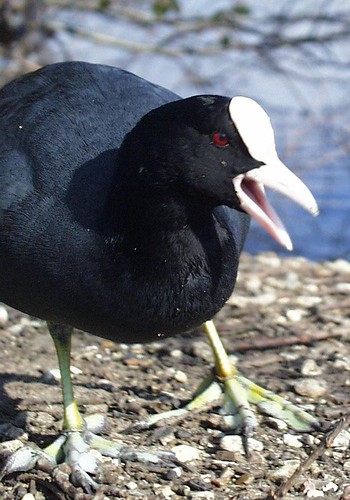Temple Grandin is a researcher at Colorado State University who specialises in the behaviour of farm animals. She also happens to have autism. In this book, with the help of Catherine Johnson, she describes how this supposed disability has helped her to better understand how animals see the world. The proof of her claims is that she has been hired by McDonalds to sort out problems with animals panicking at some of their meat packing plants (where even a few minutes delay can cost tens of thousands of dollars in lost production). As well as farm animals such as cattle and horses, this book also covers household pets such as dogs. Indeed, some of the insights in it might also be applicable to humans.
In some parts the text feels a bit repetitious, and I wonder if this is Grandin's autism coming through? I think somewhere she says that some autistic people tend to produce very repetitive writing.
One point that caught my interest was that breeding an animal for one particular desirable trait, say a white coat with black spots in dalmatians, tends to result in animals which also have some other undesirable trait, say behavioural problems. Grandin seems to suggest that this might be because the desirable and undesirable traits are connected in some unknown physiological way but I don't think that this is necessarily so. The two traits only need to be located close together on the same chromosome for selection for one to also select for the other as well. There is no need for any physiological connection (this doesn't mean that there cannot be one, though).
Towards the end, this book contains some very good ideas on the effectiveness of checklists. Grandin uses checklists of only about 10 questions when assessing animal welfare at an animal handling facility. She found that with long lists it is easier for people to miss important failings. The key is to get the right questions, for example, if you want to ensure that cattle are not suffering stress from slipping and falling over then you should ask not "Of what material is the floor made of and how wet is it?" but "Do more than 1 in a hundred of the cattle fall?". You leave details of the flooring material up to the plant management; you only ask about things that are of immediate concern to the animal. A cow thinks "Am I going to fall over?"; it doesn't care why.
If you own a pet or handle animals at work then you probably ought to read this book. It will enable to to better understand your animals and to avoid causing them unnecessary stress. I know that if I was an animal, I would certainly want anyone who looked after me to have read it!
 Thu 2006-03-09
Thu 2006-03-09 
